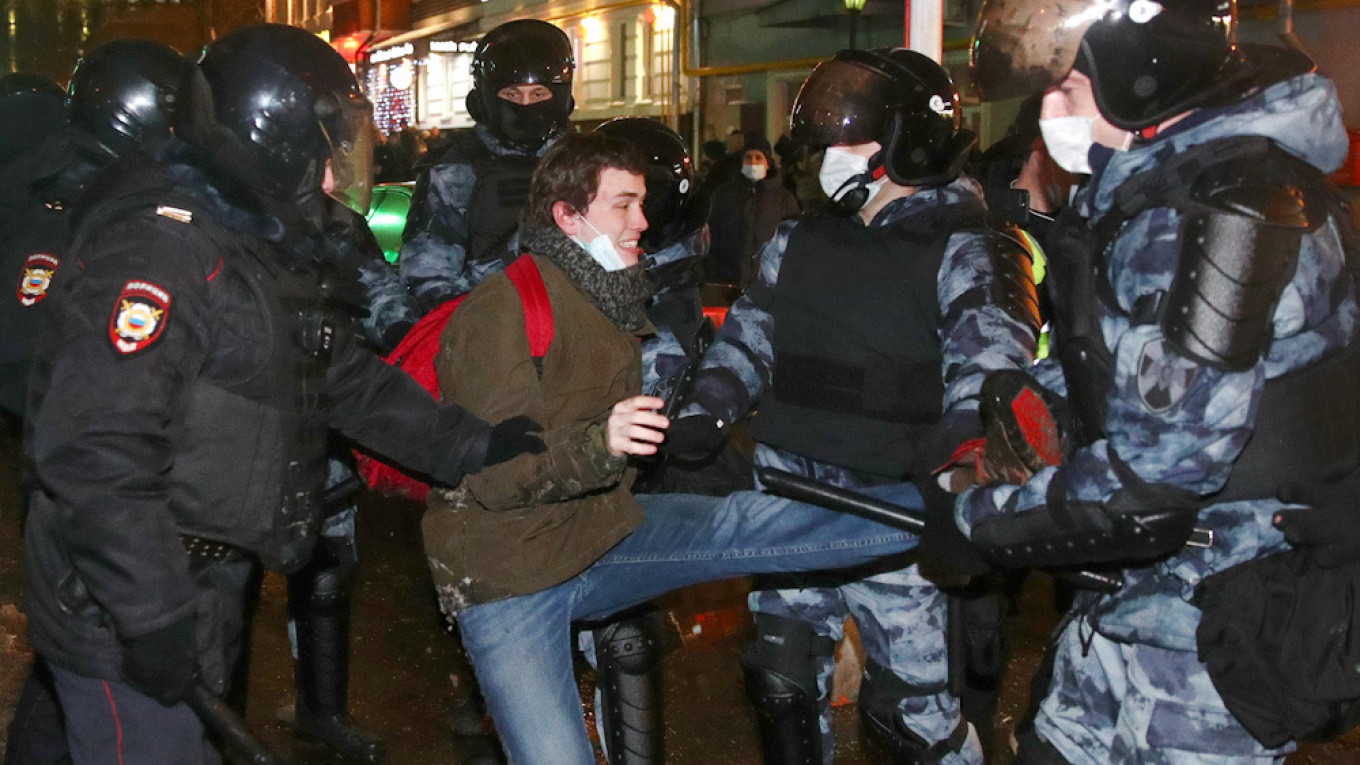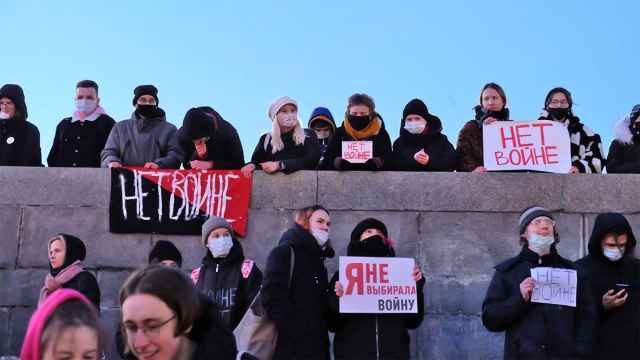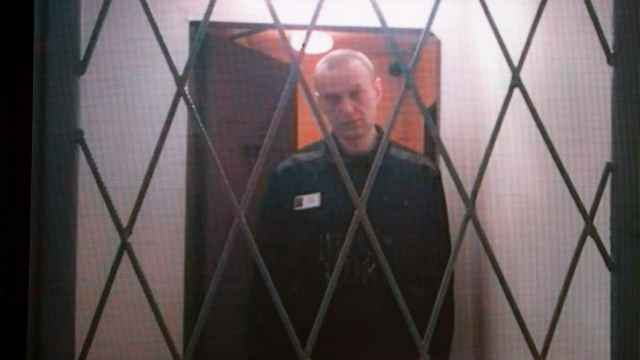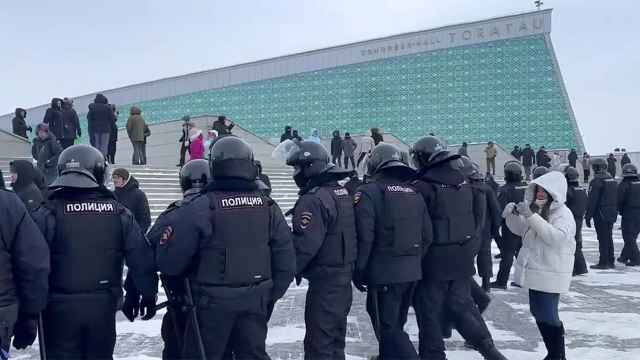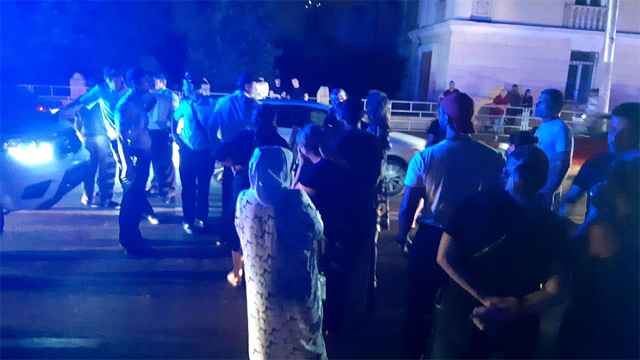Saturday’s protests were undeniably anti-regime, anti-elite, and anti-corruption, but not necessarily liberal, pro-Western, and pro-democracy. It’s not surprising that such protests frighten not only the authorities, but also successful members of society: even those who don’t consider themselves supporters of the regime.
The protests that took place across Russia on Saturday were not like the local movements seen in recent times, such as the Moscow protests of summer 2019, or the regional ones seen in 2019–2020 in Khabarovsk, Yekaterinburg, and Shiyes.
Instead of several different causes, which make the opposition agenda appear incoherent, the latest protests were all united by the same cause: opposition to the ruling regime, and support for the jailed opposition leader Alexei Navalny.
The protests had a broader support base than both the usual liberal protests and those by Navalny supporters. Many of those who took to the streets emphasized that they were moved to do so not by Navalny, whom they don’t consider an ideal leader — either for Russia, or even for the opposition — but by what the Russian state did to him: i.e., poisoning him with the deadly Novichok nerve agent and promptly arresting him as soon as he arrived back in Russia following medical treatment in Germany.
In other words, people saw this as a protest against lawlessness and — in light of last year’s changes to the constitution, which allow President Vladimir Putin to effectively remain in the job for life — the usurpation of power.
Saturday’s protests were also noticeable for the lack of humorous slogans and placards in comparison with previous Russian protests (and the current Belarusian protest movement). The protesters were very serious, even gloomy. The slogans lacked the usual appeals to the law, democracy, and the constitution.
This protest was not about calling on the authorities to follow the law, count votes fairly, allow candidates to run, reinstate an elected governor, or drop plans for a landfill or a new church.
It was a march against those in power, prompted not by electoral fraud or a town-planning mistake, but by the attempted murder and subsequent arrest of an opposition activist who had declared war on the regime.
Unlike the protests that followed the murder of the opposition politician Boris Nemtsov in 2015, Saturday’s Moscow rally was not dominated by representatives of the capital’s liberal intelligentsia. Nemtsov, having once been part of Boris Yeltsin’s team, was much closer to that subsection of society, which sees the 1990s as Russia’s golden age. Navalny is less of a hero to that group of people than Nemtsov was.
Furthermore, many of those who took to the streets in support of Navalny would not have done so for Nemtsov. Navalny attacks officials from the 2000s and 1990s-era oligarchs and officials more or less equally.
There is no sociological data on Saturday’s protests yet, but predictions that they would be led largely by very young people appear to have been wrong. In addition, the most militant protesters didn’t look like the typical supporters of pro-democracy protests in Moscow. Instead, they could be described as the young, urban, post-industrial proletariat. Most likely they are people who work in the service sector or office jobs, and who are dissatisfied with their jobs, their salaries, and their prospects.
The Moscow protest this weekend was far less peaceful than all previous events: there were many clashes with riot police, right from the start. The images of an attack on a car equipped with a flashing light are unprecedented for the contemporary Russian protest movement.
The St. Petersburg protest saw an even bigger turnout than Moscow’s. It’s possible that there is a link between coronavirus infection rates and numbers of protesters: the St. Petersburg authorities’ handling of the epidemic has been worse than that of their Moscow counterparts, and infection rates sometimes have been higher in Russia’s second city than in the capital.
Just like during the Moscow protests of summer 2019, the authorities preemptively exaggerated the confrontation to justify their harsh reaction. In their version, the security services aren’t just breaking up protests; they’re on the front line, resisting a revolution sponsored by foreign enemies whose aim is to destroy Russia.
The West’s position on the latest protests is far more active than in previous years, which only adds to the public and private fears of the Russian regime and some ordinary Russians. Western capitals always express support for Russian protesters and condemn the actions of the security services. But following his poisoning in Siberia and treatment in Germany, Navalny has become Russia’s second voice abroad after Putin’s — and a politician on a global scale — and Western statements correspond to this new reality.
The Joe Biden administration in the United States, for example, has said that it will “stand shoulder to shoulder with our allies and partners in defense of human rights.” It follows that Biden’s partner in Russia is not Putin but Navalny; that Navalny is an ally in the battle against Putin.
This is the side Washington has picked in Russia’s civil standoff, in part — possibly — as a response to Russian interference in the 2016 U.S. presidential election. Against this backdrop, it’s hard to imagine any public wavering among the ranks of the Russian regime’s soldiers.
Saturday’s protests were undeniably anti-regime, anti-elite, and anti-corruption, but not necessarily liberal, pro-Western, and pro-democracy. A combined imperative of freedom, order, and justice is at least as evident as classical liberal and democratic values. It’s not surprising that such protests frighten not only the regime, but also successful members of society: even those who do not consider themselves supporters of the Kremlin.
Now the protests’ organizers are trying to make them a regular event as long as Navalny remains in prison. A situation like that in neighboring Belarus is taking shape, in which the opposition can get people out on the streets on a weekly basis, turning protest rallies into a routine feature of Russian urban life.
These regular protests will be the backdrop to any international contact with the Kremlin, while any possible violence by the security services will be seen as an everyday occurrence in the eyes of foreigners and Russians alike. In response, the state will attempt to delegitimize the protesters by playing on the ideas that they are violent and that they have backing from sponsors abroad.
As we have seen in Minsk and Khabarovsk, protests can go on like that for many long months, in the hope of events that will break the stalemate. For now, time is on the side of the regime—but not indefinitely.
This article was first published by the Carnegie Moscow Center.
A Message from The Moscow Times:
Dear readers,
We are facing unprecedented challenges. Russia's Prosecutor General's Office has designated The Moscow Times as an "undesirable" organization, criminalizing our work and putting our staff at risk of prosecution. This follows our earlier unjust labeling as a "foreign agent."
These actions are direct attempts to silence independent journalism in Russia. The authorities claim our work "discredits the decisions of the Russian leadership." We see things differently: we strive to provide accurate, unbiased reporting on Russia.
We, the journalists of The Moscow Times, refuse to be silenced. But to continue our work, we need your help.
Your support, no matter how small, makes a world of difference. If you can, please support us monthly starting from just $2. It's quick to set up, and every contribution makes a significant impact.
By supporting The Moscow Times, you're defending open, independent journalism in the face of repression. Thank you for standing with us.
Remind me later.



